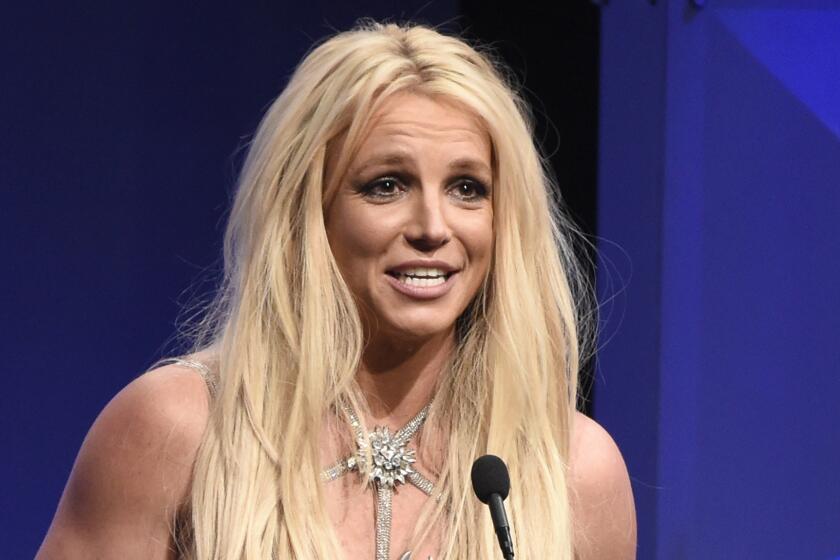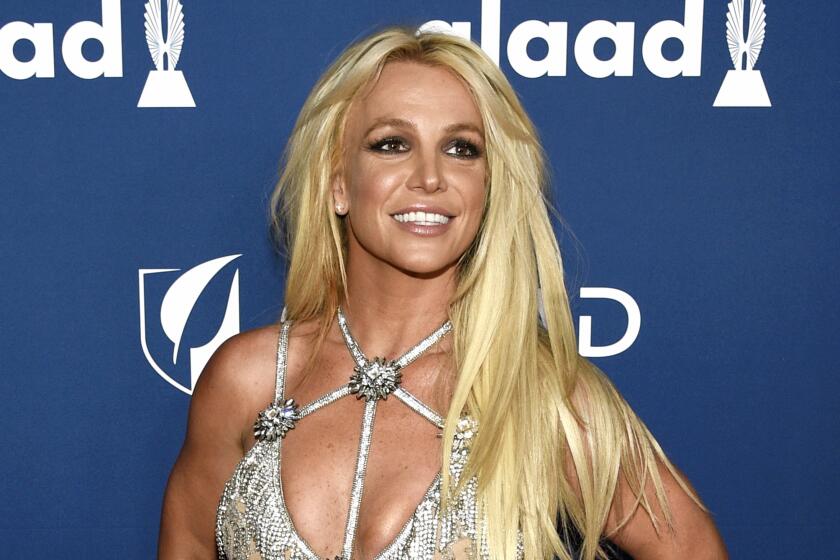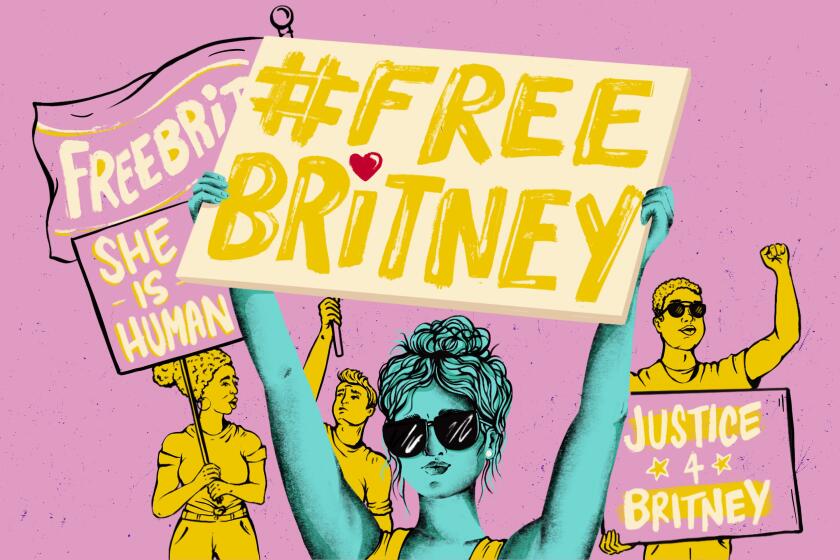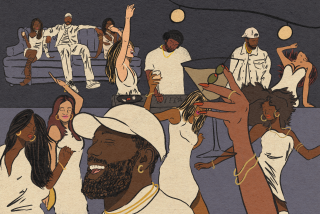Review: Britney Spears’ memoir is a Gothic horror story
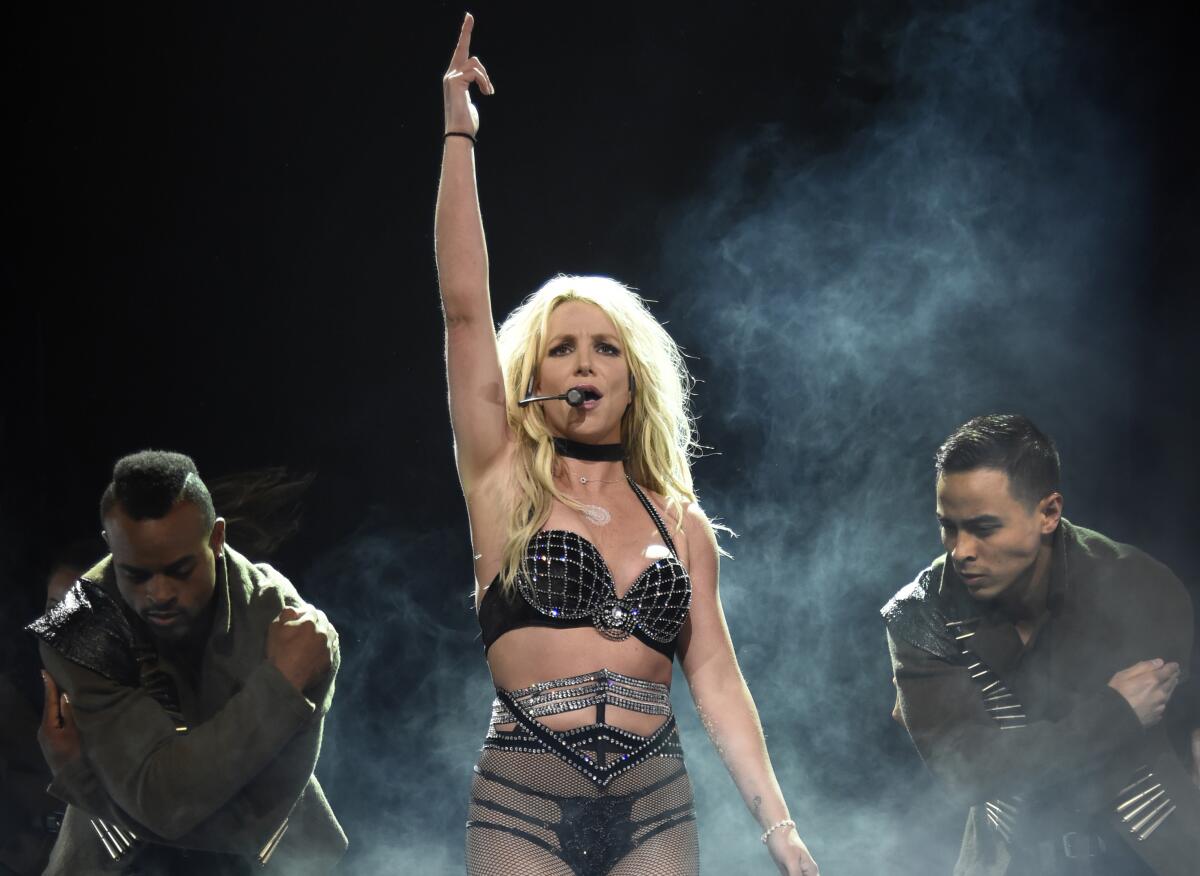
Review
The Woman in Me
By Britney Spears
Gallery: 288 pages, $33
If you buy books linked on our site, The Times may earn a commission from Bookshop.org, whose fees support independent bookstores.
Britney Spears is often painted as a tragic figure, certainly one of the most tragic in 21st century pop culture: consistently abused by the media and people in her life, perpetually viewed as a woman in need of both rescuing and subduing. Her fate has been practically Victorian: a nearly decades-long public judgment of her allegedly declining mental state, followed by quasi-imprisonment via the conservatorship imposed upon her in 2008. She would be a textbook archetype of the hysterical woman, in need of sensible men to keep her from harm, were she not a real person — a woman whose talents and sensibilities have led to both adoration and mockery from the broader culture.
There isn’t much in “The Woman in Me,” Spears’ compelling memoir, to change that frame. Far away from the twinkly lights that have defined her as one of the most beloved pop stars in the world, she’s had a difficult life, even beyond the 13 years she was under the thumb of her father-conservator, whom she regarded as abusive long before she set foot into a studio. But at 41, she’s well aware of her circumstances, and her memoir reads like a long exhale. As if by chronicling the trauma she’s experienced she is finally able to let it go, or perhaps burn it all down. “It’s time for me not to be someone who other people want,” she writes, “it’s time to actually find myself.”
Britney Spears’ memoir, “The Woman in Me,” will be released on Oct. 24. The book includes details about her relationship with Justin Timberlake and her career.
It’s not a particularly uplifting read, though relief and rebellion course through it, as she expresses for the first time her side of the indignities foisted upon her, as well as the exciting and dizzying trajectory of global superstardom from age 16. Her writing is conversational and straightforward, and though there are moments of self-reflection, the details are enough.
Her beginnings in rural Louisiana alone inch toward Southern Gothic: a raging alcoholic father, a brother crushed by a tractor, a mother “gushing” with blood after giving birth, etc. — not quite Faulkner, but powerful in its vividness. There is also Spears’ initial, failed audition for “The Mickey Mouse Club” (she was too young) bookended by a job in a seafood restaurant, “cleaning shellfish and serving plates of food while doing my prissy dancing in my cute little outfits.”
Spears’ talent as a singer and dancer gave her a way to express her voice in a home where, she says, it was suppressed. “I worked hard to make things look the way I wanted to,” she writes of being an 8-year-old directing her own imaginary music videos. “Nobody in my town seemed to be doing stuff like that. But I knew I wanted to see it in the world, and I tried to make it so.”
When she signed a deal at age 15 with Jive Records, Spears was liberated by her ability to perform without fear, even on her notorious early shopping mall tour. Almost as quickly, though, the media became adversarial and even grotesque. Adult journalists asked her questions about her breasts while simultaneously forcing her to comment on the backlash to her outfits. “I was a teenage girl from the South,” she writes. “I signed my name with a heart. I liked looking cute. Why did everyone treat me, even when I was a teenager, like I was dangerous?”
Britney Spears is angry at those who put her in a conservatorship and at Justin Timberlake, who broke her heart. These and other pain points from her memoir
This apparent presumption of danger courses through the book, from her teenage crop-tops to the over-the-counter energy supplements given to her by a nutritionist, which provoke her conservators to institutionalize her (twice with the help of a SWAT team). More acute, though, is the moment when Spears, still grieving over her inability to see her sons with Kevin Federline, is involuntarily committed to a $60,000-per-month Beverly Hills rehab center and pressured to take lithium.
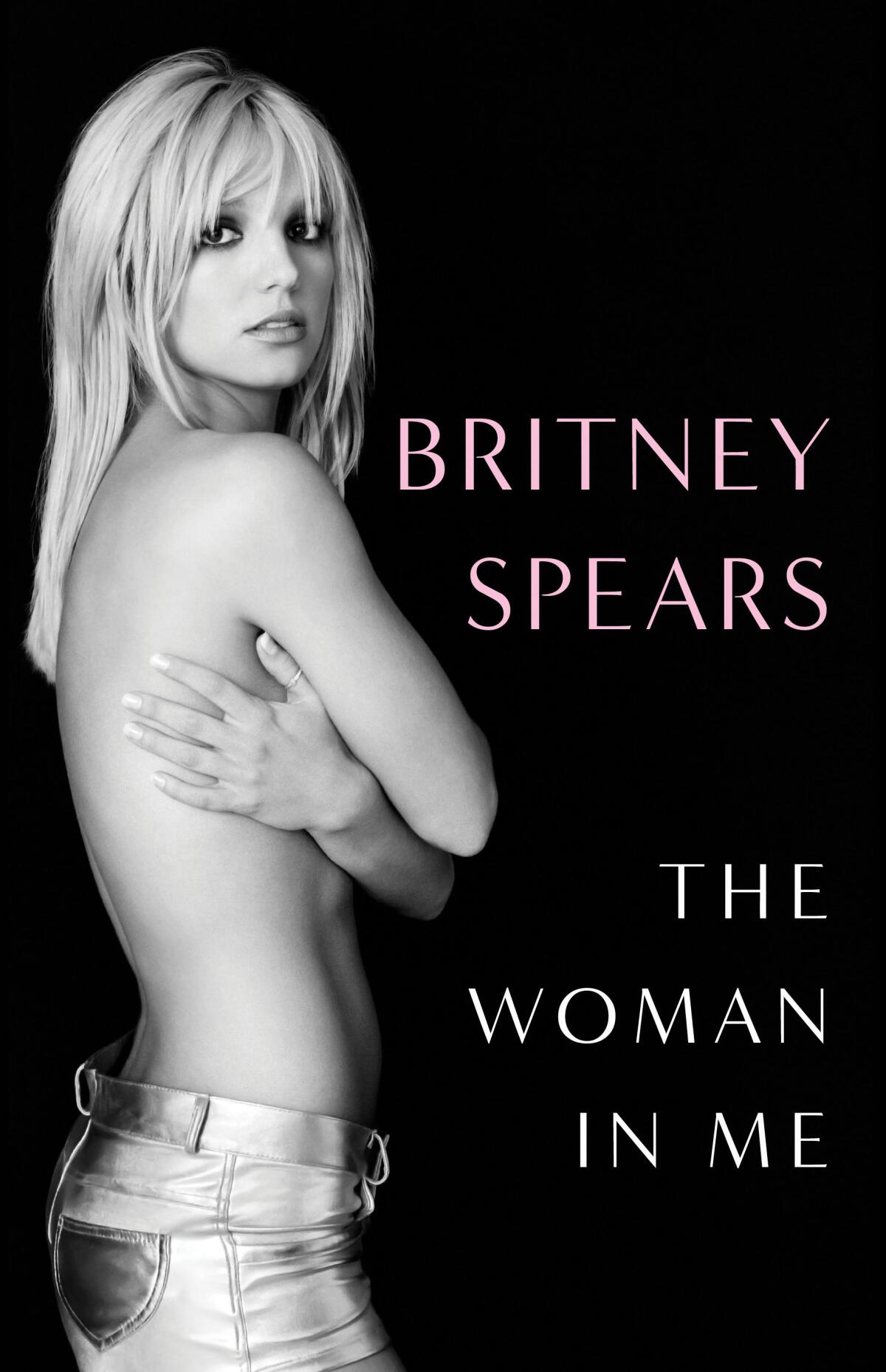
It feels like a return of the Gothic: She remembers her grandmother, Emma Jean, also institutionalized after losing a child and subjected to lithium, who eventually took her own life with a shotgun while standing on her infant son’s grave. Spears writes multiple times that she thought her family meant to kill her through the conservatorship, and it does not sound delusional, but rather shows an acute awareness of the corner in which she sat.
Much has been made of the “bombshell” revelations from this memoir — Spears becoming pregnant with Justin Timberlake and having an abortion; Timberlake cheating on her and dumping her over text — but vastly more interesting are the quiet revelations about herself. She was conscious as a teen of the older men in her audience “leering” at a “Lolita fantasy… no one could seem to think of me as both sexy and capable, or talented and hot.” She regrets not joining the Broadway cast of “Chicago” in 2001 — “I would have gotten to play a villain who kills a man, and sings and dances while doing it, too.” Shaving her head in the midst of tabloid-surveilled perinatal depression “was my way of saying to the world: F— you.”
Because tabloids have been so obsessed with Spears for the better part of the century, “The Woman in Me” is also an archetypal tale about the consequences of fame — an exceedingly nice Southern girl swept up and then chewed out by the sharkish music and media industries. There has been a reckoning in the media (the music industry perhaps less so) over its misogynist treatment of young stars, but it feels too late. The monster can’t be forced back into its cave. Just google “Meghan Markle” and witness the same viral shaming impulse replicating itself again and again.
An L.A. judge ruled Friday to terminate Britney Spears’ controversial conservatorship. These stories explain the long and complicated history behind it.
The second half of “The Woman in Me,” which details Spears’ years in the conservatorship, reads like a feminist horror story — Charlotte Perkins Gilman’s Goth classic “The Yellow Wallpaper” come to sinister life. (In one deeply chilling moment, she describes her father telling her, “I’m Britney Spears now.”) Except the prose isn’t so foreboding; Spears has always been funny and so unequivocally herself, even when recounting her mistreatment by most of the men in her life.
Timberlake’s hit “Cry Me a River,” a thinly veiled and disingenuous reference to the end of his relationship with Spears, “shamed me,” she writes, but she gets in a nice jab while describing him during his ‘N Sync days as he approached one of his R&B idols: “Oh yeah, fo shiz, fo shiz! Ginuwiiiiine! What’s up, homie?” Kevin Federline, who essentially abandons her while recording an album, receives a sharpened “bless his heart” for his sad attempts at rapping.
As she drops these nuggets, you can sense Spears gaining her power back, inch by inch. Repeatedly, she describes herself as occasionally “aging backwards,” a “Benjamin Button thing,” though the childlike state she seems to revert to in her most trying times sound less like infantilization and more like simply needing someone, anyone in her corner.
What started as a blogger’s tagline has become a global rallying cry for justice and freedom. The story of #FreeBritney, as told by the movement’s leaders.
By now the story is familiar: Those people in her corner emerged in the form of the #FreeBritney movement, which protested her institutionalization and conservatorship. She first learned of it from a kindly nurse in her rehab facility who was willing to show her the videos. Today she credits Free Britney with helping her find the courage to challenge and eventually sever her conservatorship.
“Freedom to do what I want to do has given me back my womanhood,” she writes. “In my forties, I’m trying things for what feels like the first time…. Now, finally, I’m roaring back to life.” “The Woman in Me” is a worthy act of self-resurrection.
More to Read
Sign up for our Book Club newsletter
Get the latest news, events and more from the Los Angeles Times Book Club, and help us get L.A. reading and talking.
You may occasionally receive promotional content from the Los Angeles Times.
